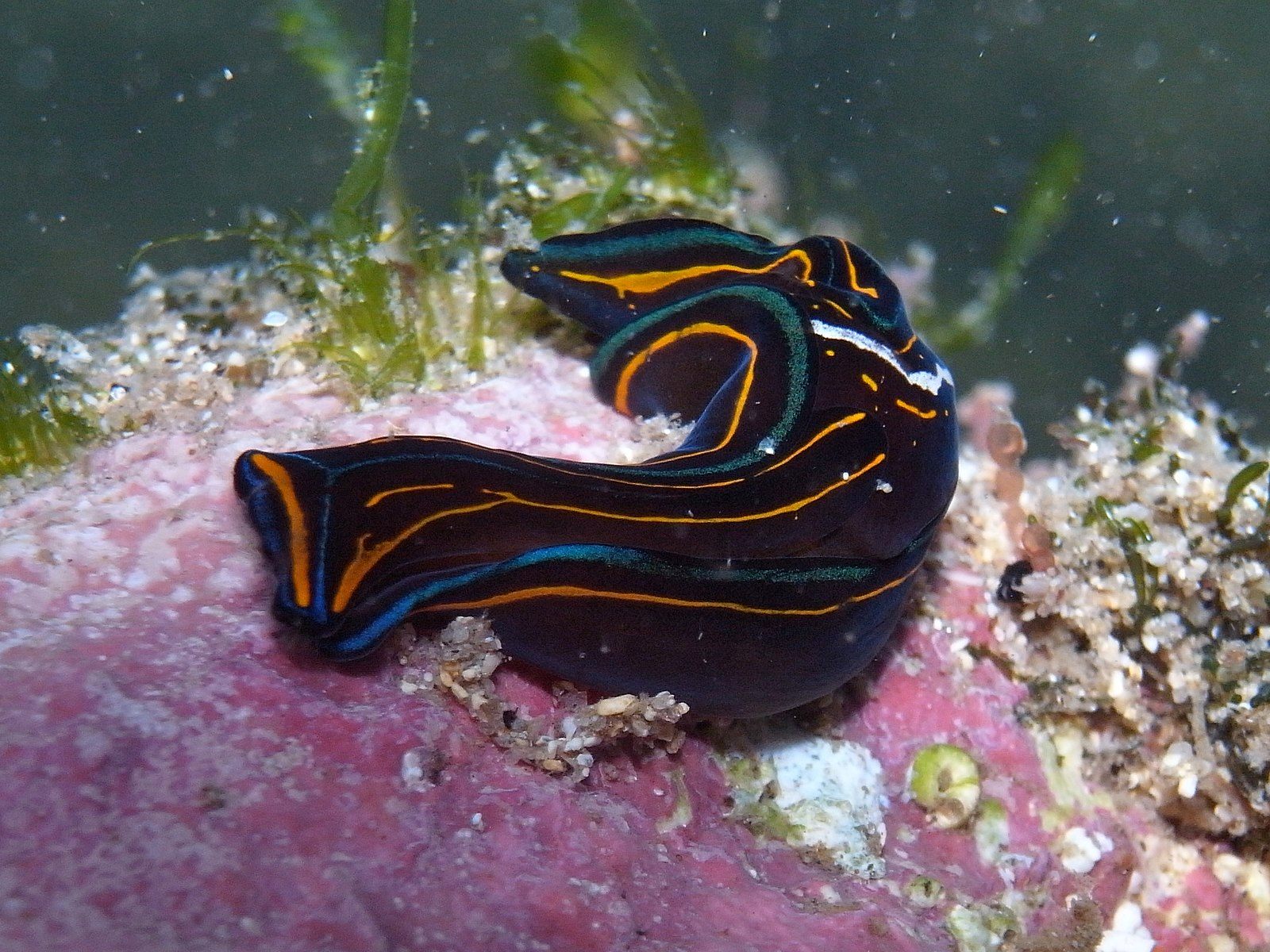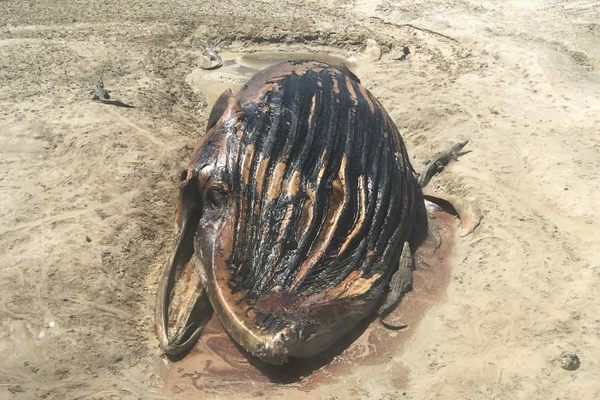It’s Sea Slug Census Time Again!
The citizen scientists of Port Stephens, Australia, are ramping up for the seasonal count.

Nelson Bay, a biodiversity hotspot off Port Stephens in New South Wales, Australia, has a number of garish occupants. There’s Pteraeolidia ianthina, or the “Blue Dragon,” which is covered in neon spines. There’s also Chromodoris splendida, which, with its striped horns and bright red spots, looks like a devilish clown. These creatures are nudibranchs, marine mollusks famed for their crazy shapes and colors and diverse lifestyles.
But the people of Port Stephens have a lesson for us all: Don’t censor the nudis, census them instead! This weekend, citizen scientists will join forces with experts to search out, document, and photograph as many nudibranches and other sea slugs as they can for the area’s annual sea slug count.
As the Port Stephens Examiner writes, there are a number of reasons to tally local sea slugs. For one thing, the area is full of all different kinds. Over 250 species have been identified there so far, and more crop up with every census. Nudibranchs are also very sensitive to ocean temperatures, so the level of their presence in Nelson Bay tracks well with the ecosystem’s overall health.

Plus, it’s fun, like a no-touch scavenger hunt. Volunteers pair up and then either dive, snorkel, or wade into rock pools to document the sea slugs, whose bright colors and slow speeds make them relatively easy to spot.
Afterwards, they pass along their findings to team leaders, sending in one photo per species. Finally, they eat lunch on the beach. “People travel from Sydney and as far north as Coffs Harbour to take part,” Danny Eather, a tourism expert, told the Examiner.
Increasingly, conservation organizations and wildlife research groups have been looping the public into their projects, both to bolster awareness of their causes and to help scale their efforts. At the moment, interested parties can help out with everything from firefly counting in New England to ID-ing photos taken by camera traps on the Serengeti. (Atlas Obscura hosted a horseshoe crab count this summer, at Brooklyn’s Dead Horse Bay.) The SciStarter website is a good place to find similar projects taking place near you.

The Port Stephens sea slug census was started back in 2013 by marine biologist Tom Davis, in partnership with a local underwater research group. Since then, they’ve held it four times a year.
This season’s event will take place at high tide on the morning of Saturday, September 9th. If you’re in the area and want to participate, you can register by emailing seaslugcensus@gmail.com. Otherwise, stay tuned to the census website for the results.
Every day, we track down a fleeting wonder—something amazing that’s only happening right now. Have a tip for us? Tell us about it! Send your temporary miracles to cara@atlasobscura.com.















Follow us on Twitter to get the latest on the world's hidden wonders.
Like us on Facebook to get the latest on the world's hidden wonders.
Follow us on Twitter Like us on Facebook